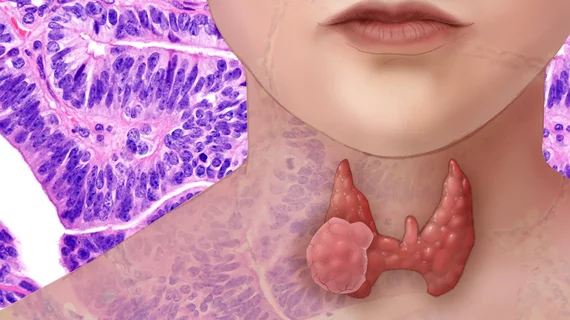Automated and structured reporting for thyroid ultrasound drops errors down to zero
Adopting a fully structured and automated reporting template for thyroid ultrasound imaging can help drop errors down to zero.
That’s according to a new study out of Duke University exploring the effectiveness of various Thyroid Imaging Reporting and Data System strategies, published recently in JACR.
Testing four reporting templates ranging from free text to fully structured and automated—with embedded software that electronically sums up TI-RADS points—experts found the latter largely eliminated mistakes.
“Classification systems in radiology such as TI-RADS can be complicated and cumbersome,” Benjamin Wildman-Tobriner, MD, with the Department of Radiology at Duke University Hospital, and colleagues from the North Carolina institution wrote Aug. 17. “Data from our readers showed fewer errors with an automated report compared with other template types, and no reader committed a single error when using the most advanced template,” the team added later.
To conduct their investigation, the research team tasked four radiologists with using the American College of Radiology’s TI-RADS to dictate 80 ultrasounds split evenly between four template types. Those ranged from the basic free text to minimally and then fully structured, and finally the souped up version that also included automation. Investigators then tracked the frequency of errors, reporting time changes, and also surveyed physicians about the experience.
Overall, the team found that the combo of structured reporting and the software reduced error rates from as high as almost 29% without automation, down to zero for the most advanced model. What’s more, the software did not appear to drag down efficiency, with dictation times remaining relatively flat, and physicians expressed satisfaction with the care tool in the survey results.
“All of our readers subjectively preferred the automated template, likely in part because it concentrated their experience and skills on classifying nodule features,” Wildman-Tobriner and colleagues concluded. “Once features were determined by the radiologist, our results suggest that software could be used generate the TI-RADS recommendations and eliminate calculation errors.”
Read more of the analysis in the Journal of the American College of Radiology here.

